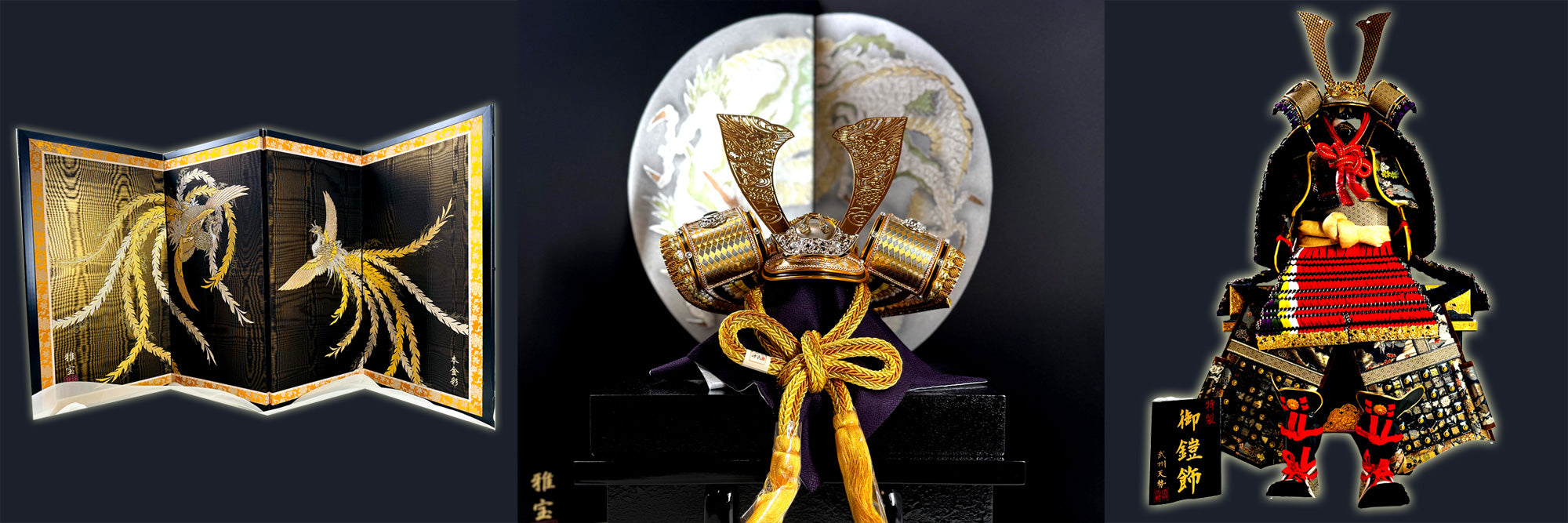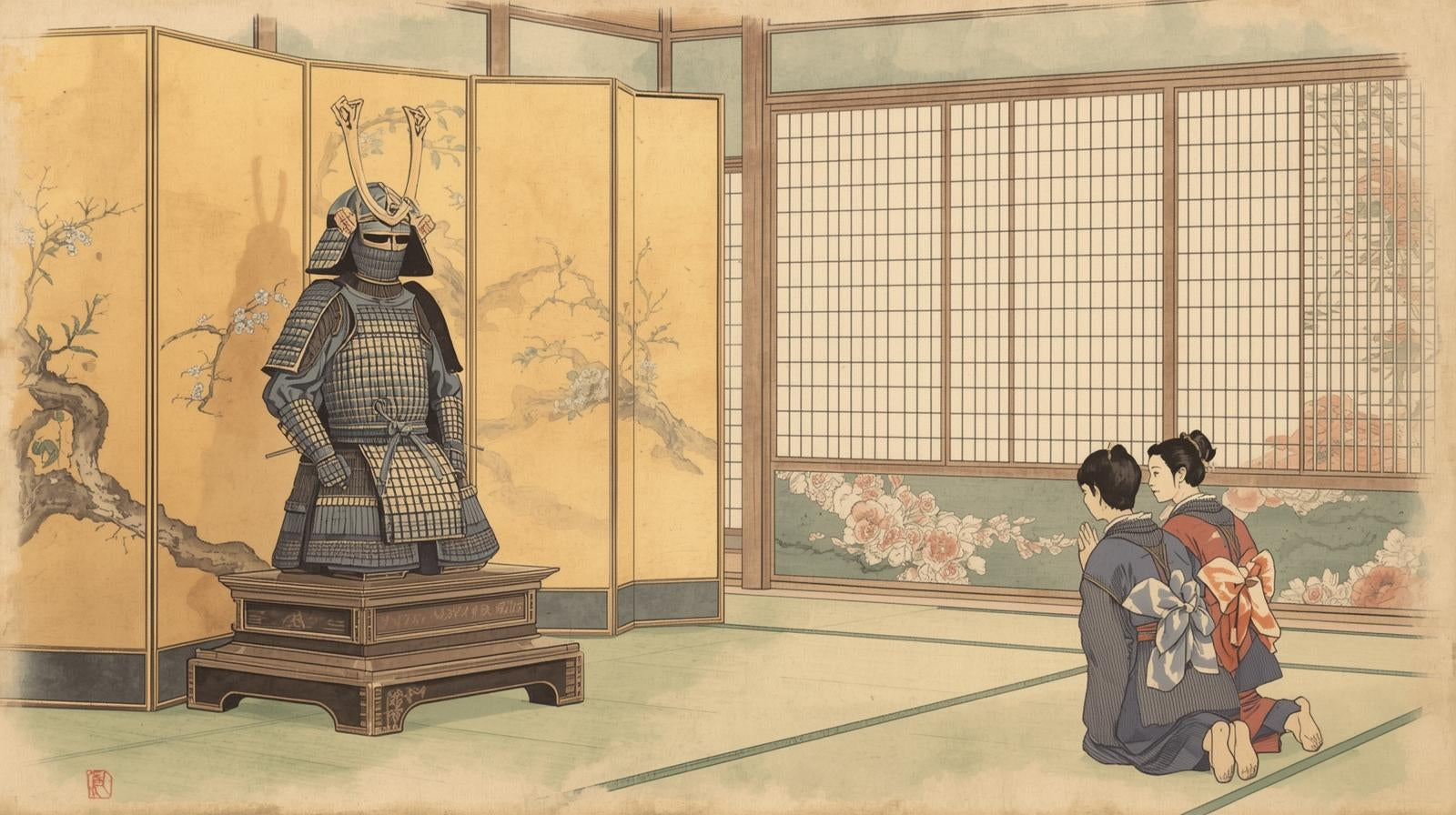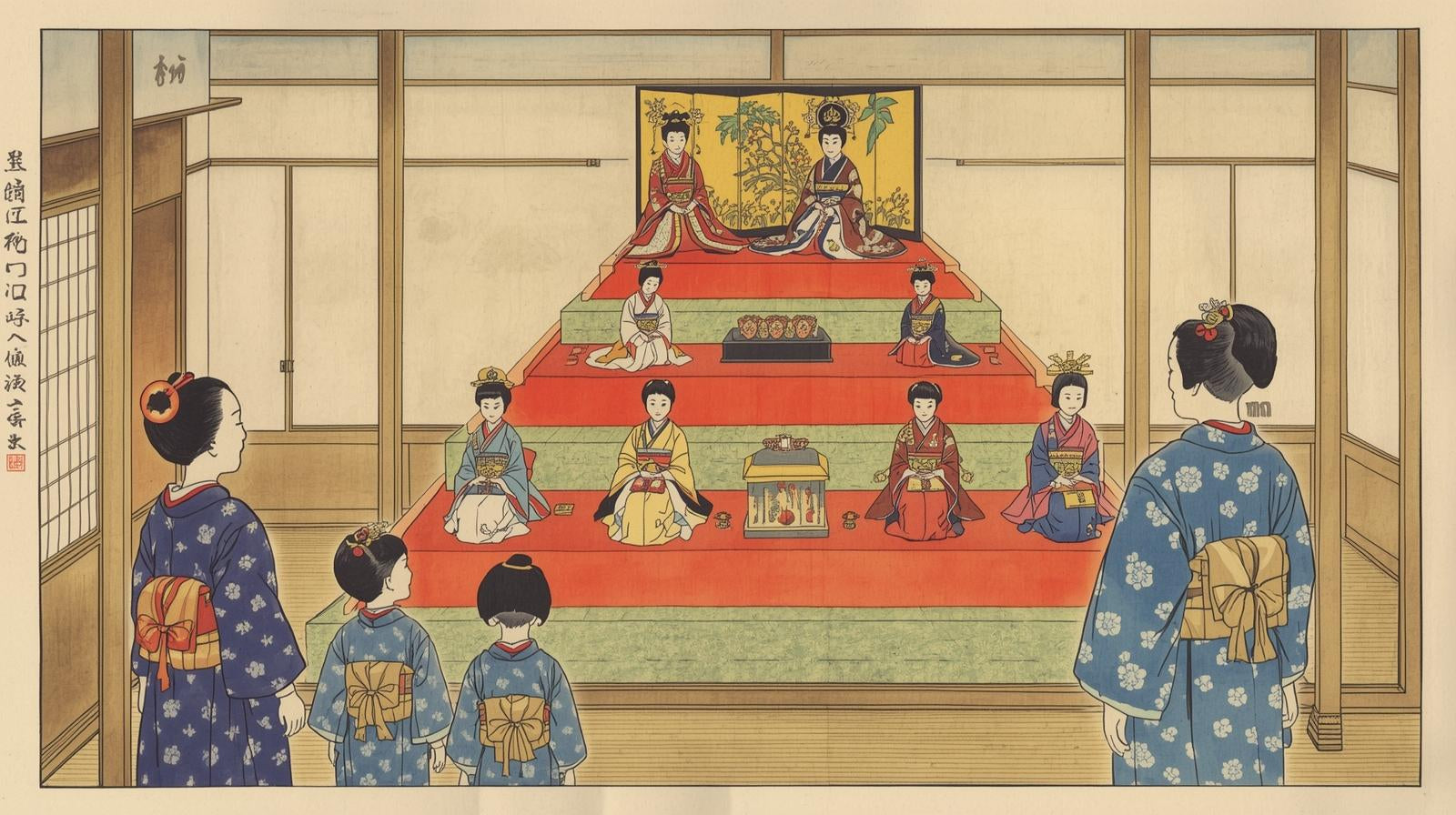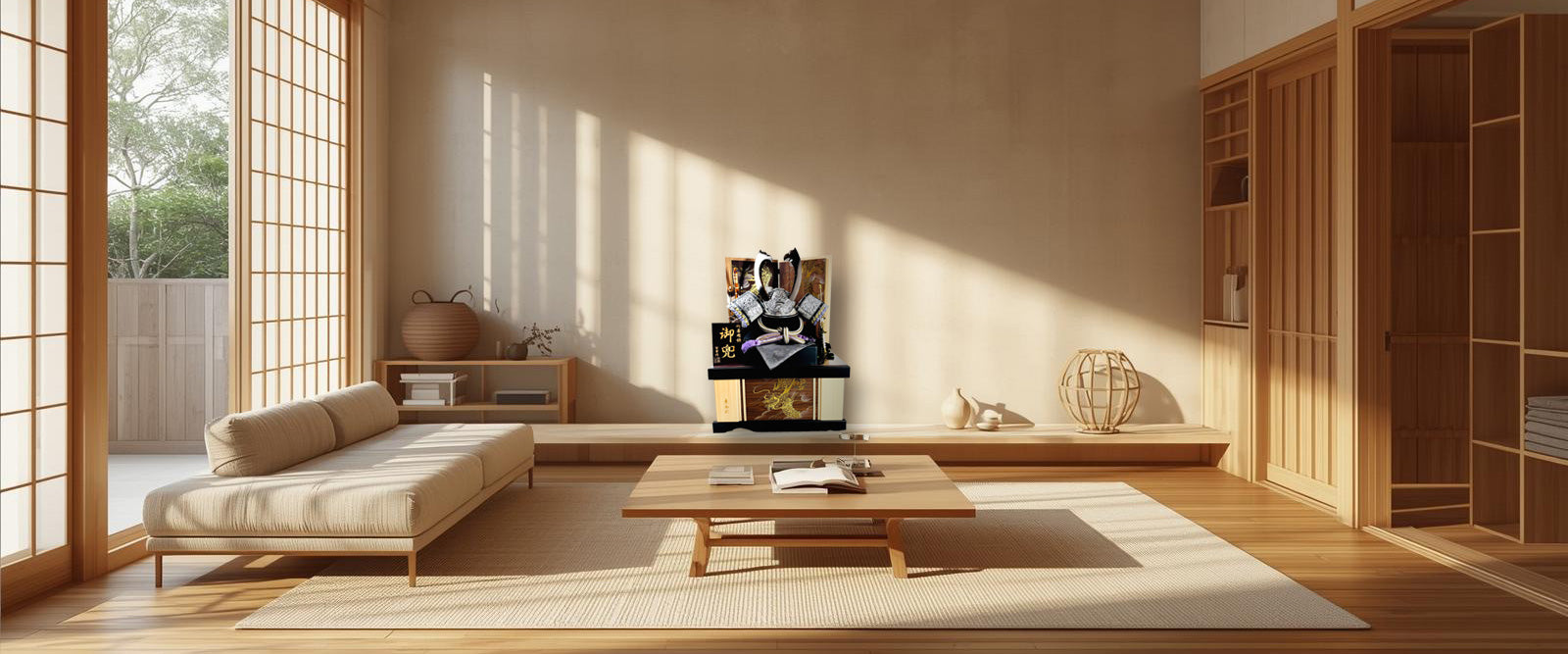Section 1
Origins of Japanese Display Traditions
The custom of displaying armor (yoroi) and helmets (kabuto) traces back to Japan’s Heian and Kamakura periods (8th–14th centuries).
Originally, samurai families displayed real armor to express gratitude for protection in battle and to pray for the safety and strength of their descendants.
Section 2
The Connection with Hina Dolls
During the Edo period, the display of Gogatsu Ningyō (May Dolls) and Hina Ningyō (Hina Dolls) became part of seasonal family celebrations.
Both traditions shared a wish — to protect children from harm and bring them happiness and prosperity.
Section 3
The Meaning of Displaying Armor
Displaying armor is more than decoration — it is a symbolic act of prayer and gratitude.
Each element carries its own meaning: the kabuto represents protection, the yumi (bow) and tachi (sword) symbolize courage and vigilance, and the byōbu (folding screen) reflects light to illuminate and purify the space.
Section 4
From Grand Displays to Compact Modern Styles
In the past, samurai households often displayed full armor sets with bows, swords, and folding screens — grand displays symbolizing prestige and legacy.
Today, modern families often choose compact, space-conscious arrangements that preserve tradition while fitting contemporary homes.
Whether grand or minimal, each display carries the same heartfelt wish for protection and prosperity.
Section 5
Continuing the Tradition
Each year in May, families continue to display armor and dolls, passing down not only the objects but the spirit of care and protection behind them.
The act of display connects generations, reminding us of Japan’s enduring values of respect, harmony, and beauty.






